Father Jean Baptiste Comte (Pa Kometa) (Pt 2)
During his time in New Zealand he was called upon to assist in a wide range of duties, for example in July 1847 Father Comte’s Maori language skills were called on to help Hon. Mrs Petre present a silver cup to the Te Ati Awa rangitira Te Puni. The cup, a gift of Alexander Currie, Esq of London was in recognition of Te Puni’s assistance to the early settlers when they first arrived in Wellington.
Father Comte’s spiritual duties were also wide ranging and in April 1849, he attended upon Henare Maroro, from the time of his conviction for murder. Henare was only the third person to be hanged in New Zealand and the second Maori. He made a full confession of his crime which Father Comte had printed in the newspaper in both Maori and English. Henare, also dictated letters to Father Comte in Maori who forwarded them on to Henare’s relatives. About 500 people attended the public hanging (which included women both Maori and Pakeha). On the scaffold it is recorded that Father Comte and the prisoner “ were for some time engaged in earnest prayer”. Ironically, although Henare’s sentence included the phrase “that his body should be buried within the precincts of the gaol,” this provision was remitted by the Lieutenant Governor as the gaol had been destroyed by the 1848 earthquake! It does not appear that Henare Maroro’s burial place is recorded, perhaps it was in the vicinity of Mount Street Cemetery?
Father Comte returned to France in 1854 on the brig Mountain Maid, taking with him the young Francis Redwood, destined to become the great Archbishop Redwood. With the departure of Father Comte from Otaki the economic impetus begun by Father Comte slowly ground to a halt. The market for flax collapsed and the price of grain and flour fluctuated. The great 1855 Earthquake raised the level of the Waitohu Stream to such an extent that the flow of water was not enough to turn the water-wheel. The Elizabeth stranded on the Otaki Bar and was badly damaged. She was dragged up the Otaki River and left on the bank where she eventually rotted away. Furthermore, the elementary school taught by Father Comte ceased to exist after his departure,
In a letter to Father Poupinel from Father Petitjean in 1854 December, he wrote of Father Comte that: “He was a good missionary, created useful establishments amongst the Maori who loved him a lot. He had the affection and esteem of the Europeans. He understood perfectly Maori customs and language. He made great progress in English, so much so that he started to preach with success in that language. He learns with ease and does not give up.”
In a Report to Father V. Poupinel SM ( in charge of Pacific Missions) in Lyon France, by Father D. Moreau SM dated 1 May 1873, he states under the heading “ Notes on Otaki, the Old Station of Father Comte”:
“ It was flourishing under his administration. He knew how to make his Maoris industrious and hard-working to the point where the whites were astounded. In fact under his administration and direction they were able to build three (flour) mills run by water power, (a rope walk) to make phormium tenax into ropes, to open roads, to work the soil in order to cultivate wheat, maize etc, to practice commerce by having shops in various villages, to carry their commodities and the fruits of their industry to Wellington (52 miles) and to bring back merchandise. The (Wellington) Merchants were not afraid to give them credit for large sums. They were even able to buy a cutter to carry their produce(to Wellington)by sea. He made them a present of two pairs oxen to help them in their work.”
In addition, spiritually however Father Comte had laid a very solid foundation for the people of Pukekaraka which in spite of some periods of decline, exists right up to the present day. When Bishop Viard made his first visit to Otaki in 1850 he found 200 practicing Catholics and he baptised a number more. Father Comte was an interesting character and his practice of flying the French tricolour from the flagpole at Pukekaraka on feast days as a sign of special prayers, was later to have political ramifications. During the rise of the Maori Kingite movement, Father Comte’s French tricolour was again flown together with the Kingite flag. This was interpreted by locals and the New Zealand Government that the Otaki Protestants supported the Government while the sympathies of the Otaki Catholics were for the Kingite cause and not to be trusted. This situation was not helped by a Kingite meeting at Taupo in 1862 concluding that Catholicism was a better religion for Maori.
After Father Comte’s return to France, he left the Society of Mary and became a secular priest. Though no longer a member of the Society of Mary he retained his links with the Maori Mission and the parishioners of Pukekaraka/Otaki. In June 1887 for example he wrote a letter to the Marists and his Otaki parishioners. During a trip to France from New Zealand in 1893/94, Father Cognet SM paid Father Comte a visit. Father Comte died in Bourbon l’Archambautt, France on 14 January 1899 aged 86. Word did not reach Pukekaraka/Otaki until the end of April 1899 and a few days later a Requiem Mass was held in honour of Father Comte followed by a tangi. It was resolved by the parishioners at that time to erect a tablet in the Church after it had been renovated and enlarged.
In a letter by Fr Comte’s nephew notifying SM members in NZ of his death (probably sent to Archbishop Redwood, as it starts “Monseigneur”, a title given to bishops and archbishops in French) he informed Father Comte’s former New Zealand confreres that; “Two days before his death he was still celebrating Holy Mass and that “he had a great love for Maori. If he had been only fifty years old, he would not have hesitated to return to NZ to evangelise amongst them”.
Life and work on the Marist Maori Mission had a life-long impact on many of the priests and brothers who laboured there. Even though Father Comte left the Society of Mary, the impact of his work among Maori clearly remained with him for the rest of his life. Similarly, Father Francois Delachienne SM (Father Delach1866-1949) who was exiled back to France after differences with the Archbishop over the efficacy of hui for evangelisation, pined for his former life among Maori at Otaki during the last 33 years of his life in France. Father Gordon Kerins SM (1915- 2011) was another Marist who in a later age, emulated the work of Father Comte with an innovative project in Taranaki. This scheme involved working closely with local Iwi to engage local youth in a market gardening/profit sharing enterprise providing direction and employment for disaffected youth and an economic base for the Iwi. A lack of sufficient working capital unfortunately eventually put paid to this venture.
In many respects Father Jean-Baptiste Comte was an exemplary early Marist Maori Mission priest. He learnt and spoke fluent Maori and spent fourteen years labouring in the Mission field. Clearly a man of vision he could accurately see the impact that arrival of increasingly large numbers of pakeha would have on their lives particularly in the areas of social disruption, technology and pressures on their lands. He saw the creation of a sound economic base as a way of minimising this impact on his flock which could go hand in hand with bringing Maori to the Faith. Sadly he left the Society of Mary and returned to France and there was no permanent replacement for him until 1890. Periodic visits were made by Marist priests from Wellington including Father Petitjean, Father Seon, Father Maillard, Father Pertuis and Father Moreau. One cannot help but wonder what might have been, if Father Comte had stayed on or been replaced by a priest with a similar vision and drive. As it was, it was not until the mid-1880s that the momentum was regained under Fathers Melu, Cognet, Vibaud and later Father Delachienne.
The final word on Father Jean-Baptiste Comte must go to the Marist Messenger which in an article in June 1932 called Otaki “ The Iona of New Zealand “ and this most fitting title was built on the solid foundation laid by Father Jean-Baptiste Comte SM (and those who followed ) as one of the cradles of the Catholic Faith in Aotearoa/New Zealand.
Ken Scadden (with editing and French translation assistance of Elizabeth Charlton).

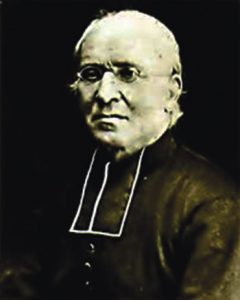
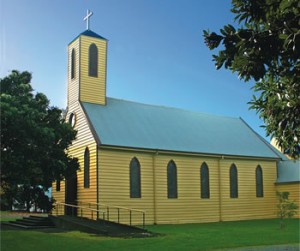
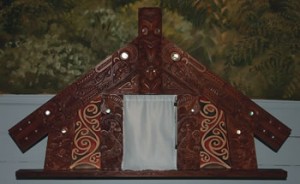
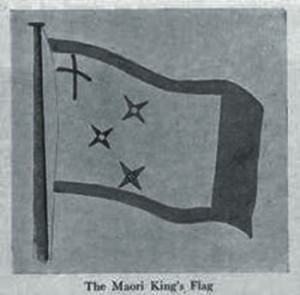
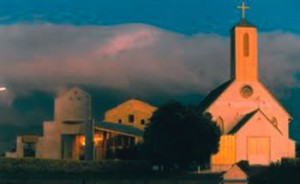
 Entries(RSS)
Entries(RSS)